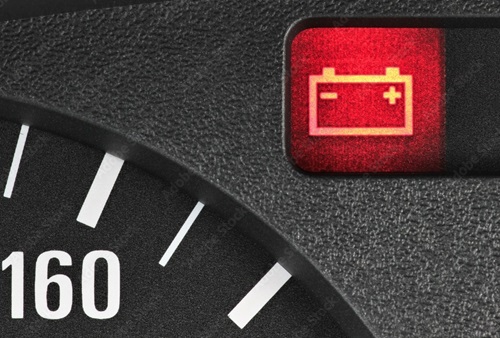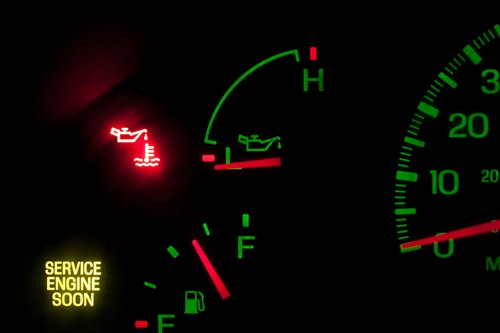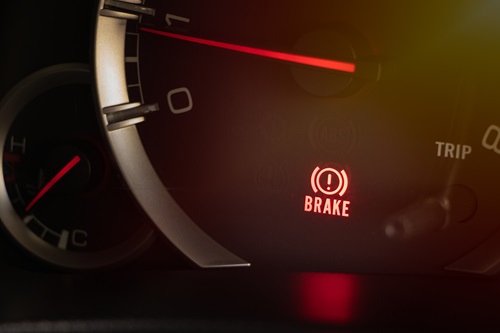Not sure what that warning light is that’s suddenly showing in your car’s instrument panel? You’re not alone – but whatever you do, don’t ignore it.
Modern cars are packed with technology and even the most basic models these days will have dozens of high value components, monitored continually by electronic wizardry. If you see a warning light come on for any of these components, you shouldn't just ignore it.
Many of these components are the essential features of any car, such as engine, gearbox and brakes, but there are lots of other features that need to be working correctly, to keep the vehicle running safely and efficiently.
And all of these will have an instrument panel light connected to them to show the driver that everything is working well (or not). These are often called ‘warning lights’ but they don’t all necessarily give out ‘warnings’.
Flick through any car’s operating manual or handbook and you’ll find a section on warning lights containing rows of pictures of dashboard symbols and their meanings. And you will probably notice several of these lights glowing when you turn the vehicle’s ignition key – several of them illuminate before you even fire up the car.
Once the engine has settled to a tick over, most will go out. But what if something stays glowing? Or what happens if a light comes on while you are driving? It depends on what the light is telling you, but one thing is for sure: if it’s a warning, do not ignore it.
If you don’t know what all your dashboard lights mean, you’re not alone – research has shown that millions of drivers admit they don’t understand the meaning of some or all of their car’s instrument panel lights. It is worth though, having a look at your car’s handbook and getting familiar with the basics.
Colour system
Most car warning lights have a colour code to them: red, yellow and green, rather like traffic lights. A green light will show that something is working well, such as turn indicators or side lights. A yellow light usually flags up a potential problem that will need dealing with soon. This could include a ‘low fuel’ warning, or a tyre pressure change.
However, a red warning light means the driver should stop the car when it’s safe to do so and take action immediately.
Which ones should I not ignore?
So which car warning lights are the most serious and should definitely not be ignored? Here is MotorCheck’s top 10 list of the red lights you really don’t want to see glowing in your dashboard. But remember, if you do spot one, do something about it as soon as possible.
- Airbag warning – a figure of a person with a circle in front of them. This is also called SRS (supplementary restraint system). If it shows, it means part of the airbag system is faulty and might not deploy in the event of an accident.

- Battery charge – a battery symbol usually with a plus and minus inside. It will show if your battery is not charging. That could mean the battery itself is faulty (they only last a few years), the alternator has failed, or there’s a bad connection somewhere.
- Brake system – a circle with an exclamation mark in the centre. It probably means the brake fluid level is low, but there could be other issues, so the system needs to be checked by an expert immediately. If there's one warning light you shouldn't ignore, it's this one.
- Door open – a picture of a car from above with one or more doors showing. The last thing you want is a door flying open while you’re driving, especially if you have passengers in there with you. Stop when it’s safe and check all door handles.

- Oil pressure – a symbol of an oil can usually with a drip coming from it. This is to warn of either high oil temperature or low oil pressure. If oil is not circulating round your car’s engine correctly, it could cause serious, lasting damage to the motor.
- Engine temperature – a thermometer symbol. An overheating engine is not good news and could be caused by a lack of coolant liquid, which needs replenishing. It might be a component failure though, so have the engine checked.

- Handbrake on – a circle with a ‘P’ in the centre. Drive around with your handbrake (also called a park brake) on and you will probably start smelling burning. Hopefully the warning light will alert you before that happens.
- Low battery – a similar battery symbol to the ‘battery charge’ warning. This is for drivers of electric vehicles (EVs) only and is an alert that the charge in the vehicle’s power pack is low and needs topping up at a charging point very soon.
- Power steering – a steering wheel symbol with an exclamation mark. It means the car has detected a problem with the steering. If it’s an electric set-up, switching the car off and on again might sort it, but if the light remains on, get it checked by an expert.
- Transmission temperature – a cog symbol with a thermometer in it. Gearboxes are designed to get hot. But when they overheat it can cause a transmission failure, which is difficult and costly to repair. Take heed of this warning light.
Have it checked
Just like it’s important to check the history of a car before you buy it (using MotorCheck, for example), simple, regular maintenance and having your car inspected or serviced occasionally by an expert should reduce the chances of these warning lights showing.
Then you might avoid the nightmare of a red light suddenly showing up on your dashboard while you’re overtaking in lane three of the M1.
